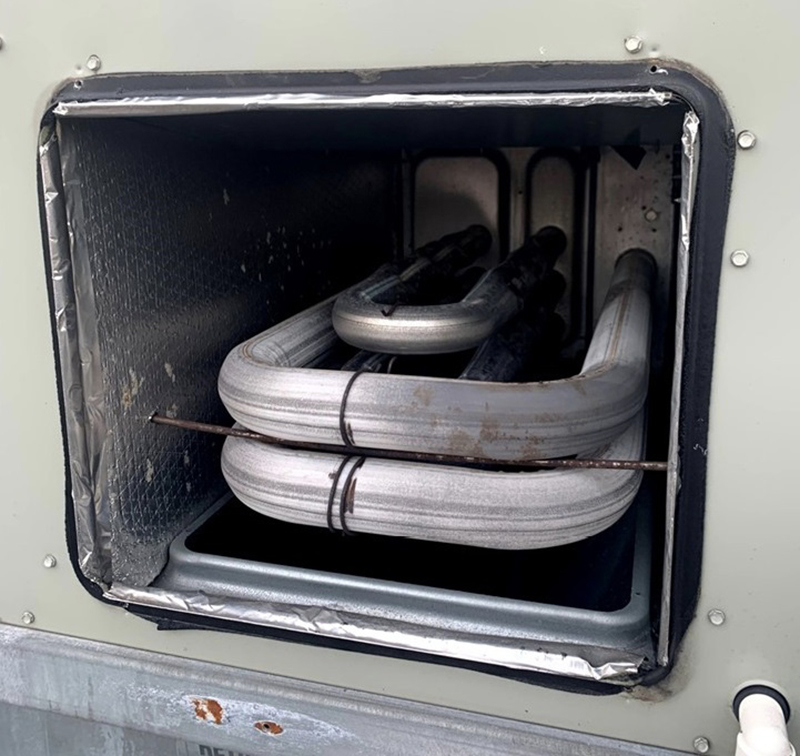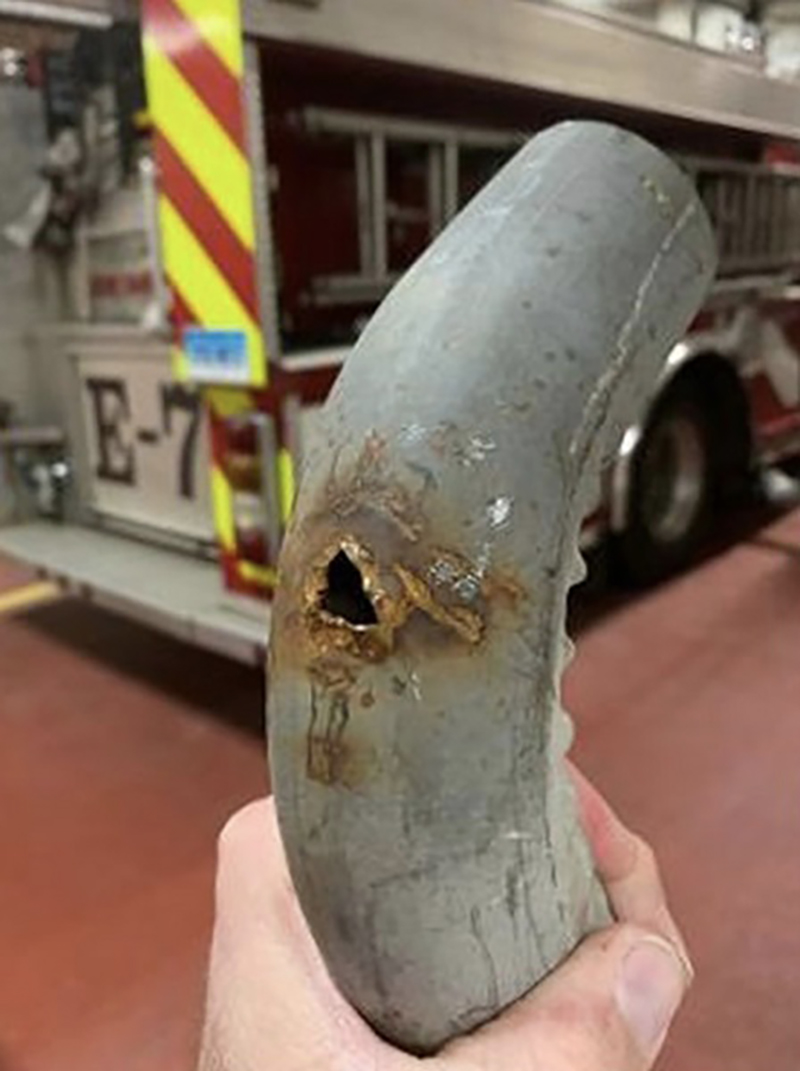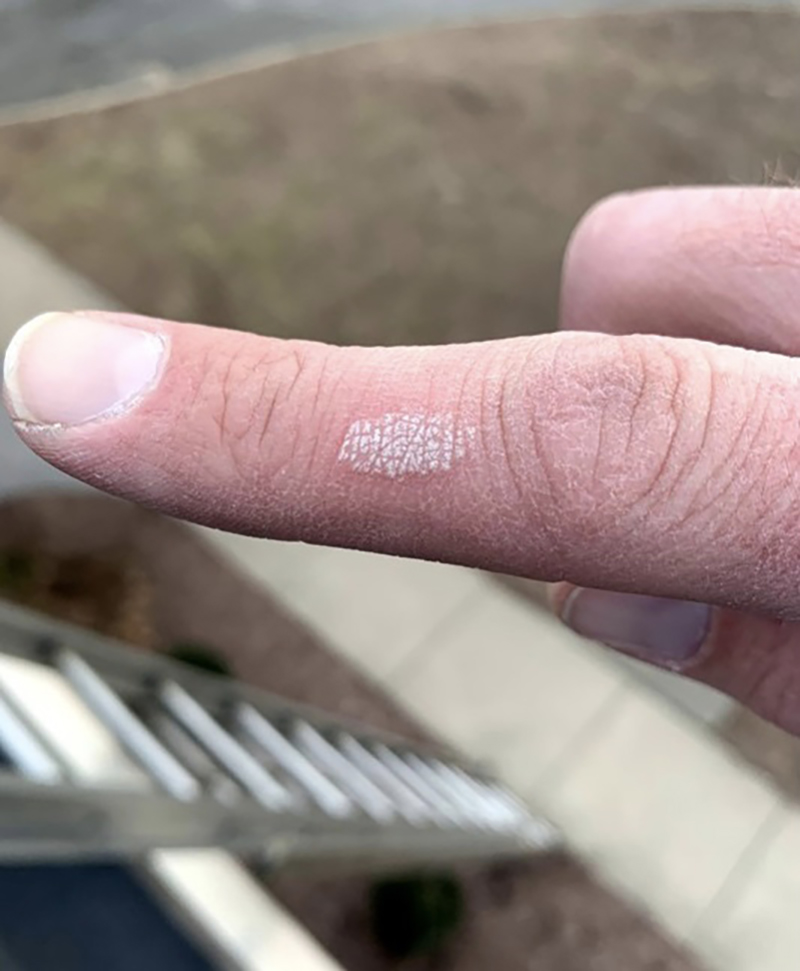TRAINING NOTEBOOK ❘ By ADAM J. HANSEN
When arriving on scene to a commercial occupancy, we are often presented with “nothing showing” and are forced to investigate. We then enter the structure to find an odor of something burning or a slight haze near the ceiling. Many times, rooftop units (RTUs) lend to be the source of most of these “smells and bells” type calls. Although consistently activating the 911 system, worn-out belts seldom present us with a true emergency. However, it is vital to ensure the building is not on fire, locate the affected unit, investigate, and safely shut down the RTU.
With this said, worn-out belts do not typically create a truly immediately dangerous to life or health (IDLH) environment. However, what if there is an underlying emergency? What if we unknowingly assumed every “smells and bells” type call was nothing more than an issue with a belt? What if we left an incident and returned to quarters, leaving a faulty RTU running, creating an IDLH environment within the building? Is this fulfilling our mission of protecting our community? It’s often no fault of our own, but many of us were simply never provided with the education to effectively investigate these types of incidents, specifically RTUs.
RTU Emissions
When RTUs produce heat for a building, that heat from the burner is pulled by an inducer motor up and into the heat exchanger. As fresh air that is meant for the building is pushed by the blower/motor, it passes over the heat exchanger tubes and is heated. This heated air is then pushed by the blower/motor throughout the building’s ductwork, heating the individual spaces the distributor vent services.
It would be great if the only product to come from the burners was heat, but this far from the case. When the burners produce heat, they also produce unwanted by-products of combustion including carbon monoxide (CO). Instead of these by-products entering the air destined for the building’s inhabited compartments, the heat exchanger creates a single, safe, airtight vessel for gases produced by the burners to discharge safely back into the atmosphere.

(1) A typical heat exchanger found within rooftop units. (Photos by author.)

(2) A rotted-out portion of a section of tube within a heat exchanger. It’s at these compromised sections where harmful gases are allowed to mix with air heading for the interior compartments of structures.

(3) Make sure to wear proper personal protective equipment, and do not contact a hot heat exchanger.
Sometimes, the fire department will be called for an odor of gas or burning inside a building. Depending on where you work, commercial occupancies may not have CO detectors because of codes. When you enter a building to investigate an odor of burning and a RTU is suspected, it’s essential to use a four-gas or, at a minimum, a CO meter.
Although there are many reasons for CO to emit into a building, be cognizant of a possible cracked heat exchanger, which can allow for exhaust gases to mix with the “good” air and be pushed by the blower into the ductwork and throughout the building. This could result in the harmful products of combustion spilling into the building and creating an IDLH atmosphere.
Another risk from a cracked heat exchanger is “flame roll back.” When a heat exchanger is cracked, it can cause pressure differentials in the tubes and cause the flames to be forced back out to the burner section instead of flowing smoothly through the tubes. Signs of flame roll back could be the presence of melted wires and charring to the burner area and to the backside of the service panel.
Shutting Down RTUs
Note that, when investigating RTUs, you must shut down the unit. Many people have lost hands because of the centrifugal motion and force of the blower fan. There is also the risk of burns, electrocution, and other hazards.
If you suspect a potentially cracked heat exchanger during your investigation, one clue would be the presence of a completely rotted-out section of the exchanger tubes; unfortunately, other clues may not be this obvious. Small cracks can be found anywhere within these exchanger tubes, especially on the seams that bind the tubes together. The presence of small pin holes may exist as well. Some of these small cracks may not be big enough to create CO or other hazardous conditions. However, the American Gas Association states that any crack found in a heat exchanger means it must be replaced.
Many firefighters think that investigating a RTU simply consists of “looking for a worn-out belt.” Although that could most likely be the reason for the odor, many other issues could cause the 911 system to activate. Unfortunately, most firefighters were simply never educated or trained to thoroughly understand how to investigate these units.
Unlike a worn-out belt, which most often doesn’t create a true emergency, a cracked heat exchanger can create a true emergency. If we leave an incident without shutting down a unit with a cracked heat exchanger, we could be leaving a faulty RTU running with deadly implications for the citizens we are sworn to protect.
ADAM J. HANSEN is a lieutenant with the Milford (CT) Fire Department, where he has worked since 2006. He began his career as a volunteer in his hometown of Branford, Connecticut, in 1999. Hansen graduated from the University of New Haven with a bachelor of science in fire science (fire administration), a minor in criminal justice, and a master’s of public administration. He is also a nationally registered paramedic and a state-certified fire instructor II and fire officer II, among many other certifications. Hansen works for several fire service organizations as an instructor.

